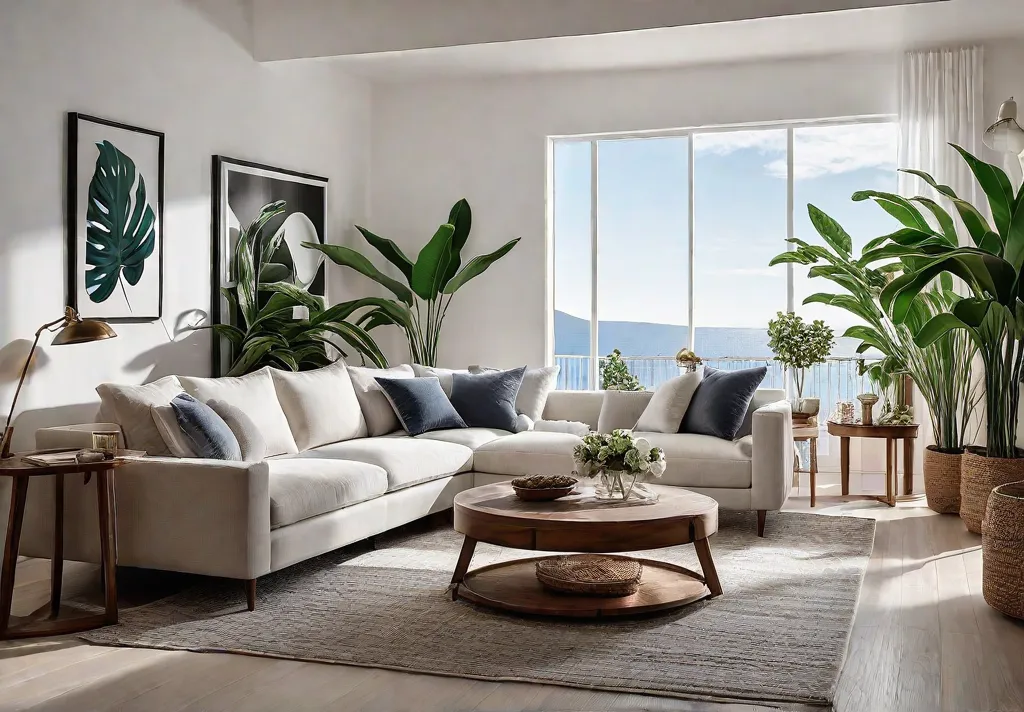Are you tired of feeling guilty about your home’s impact on the environment? I know I was. As a city dweller, I’ve always been passionate about sustainability and reducing my carbon footprint. But let’s be honest – finding eco-friendly living room ideas that are both stylish and affordable can be challenging.
That’s why I’m excited to share ten innovative ways you can transform your living space into a green oasis without breaking the bank. These strategies benefit the planet and can save you money in the long run. By making small, sustainable changes, you can create a cozy, inviting living room that’s good for your wallet and the environment.
Sustainable Materials
One of the easiest ways to make your living room more eco-friendly is to choose furniture and decor made from renewable, recycled, or reclaimed materials. For example, bamboo is an incredibly durable and fast-growing plant that produces beautiful, sustainable furniture. Reclaimed wood, salvaged from old buildings or discarded structures, adds character and reduces waste.
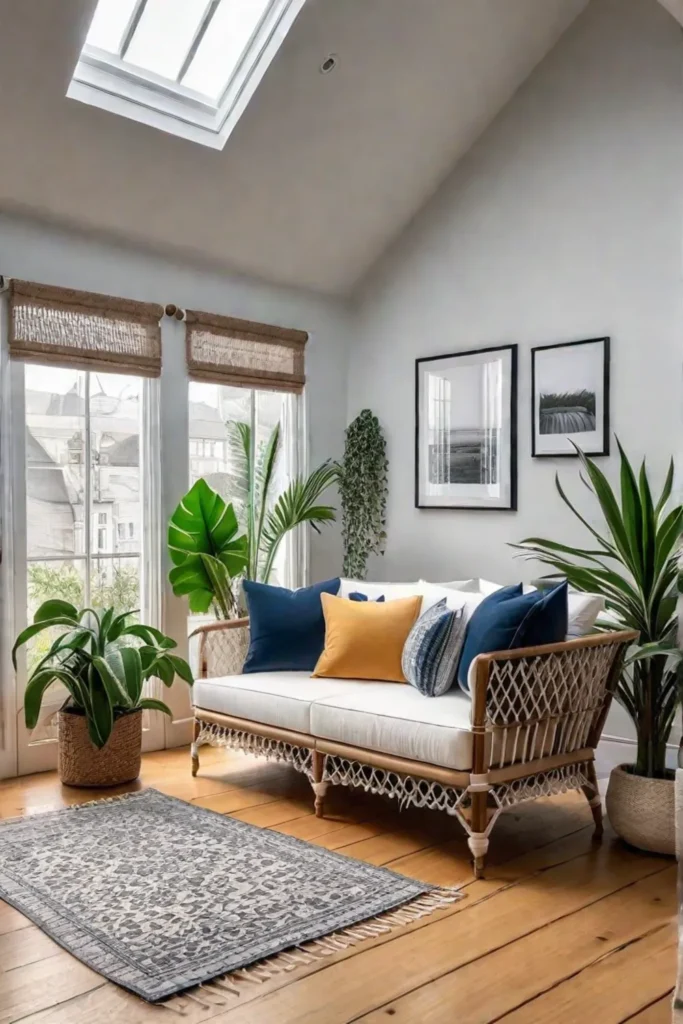
And don’t forget about recycled metals like aluminum and steel – they can be melted down and reformed into new products, cutting down on the demand for virgin materials. Glass is another great option, as it can be recycled endlessly without losing quality.
Brands like Greenington, Maiden Home, and Avocado lead the charge regarding sustainable furniture and home goods. Their elegant, high-quality pieces prove that being eco-friendly doesn’t have to mean sacrificing style.
Energy-Efficient Lighting
Lighting is a significant contributor to household energy bills and carbon emissions. But by switching to more efficient bulbs, you can drastically reduce your environmental impact and save money.
Let’s compare the energy consumption and cost savings of different bulb types:
- Incandescent bulbs are the least efficient, using around 60 watts per hour and lasting only 750 hours.
- Compact fluorescent lamps (CFLs) consume about 15 watts per hour, lasting up to 10 times longer than incandescent.
- On the other hand, LED bulbs use a mere 10 watts per hour and can last up to 25 times longer than incandescents.
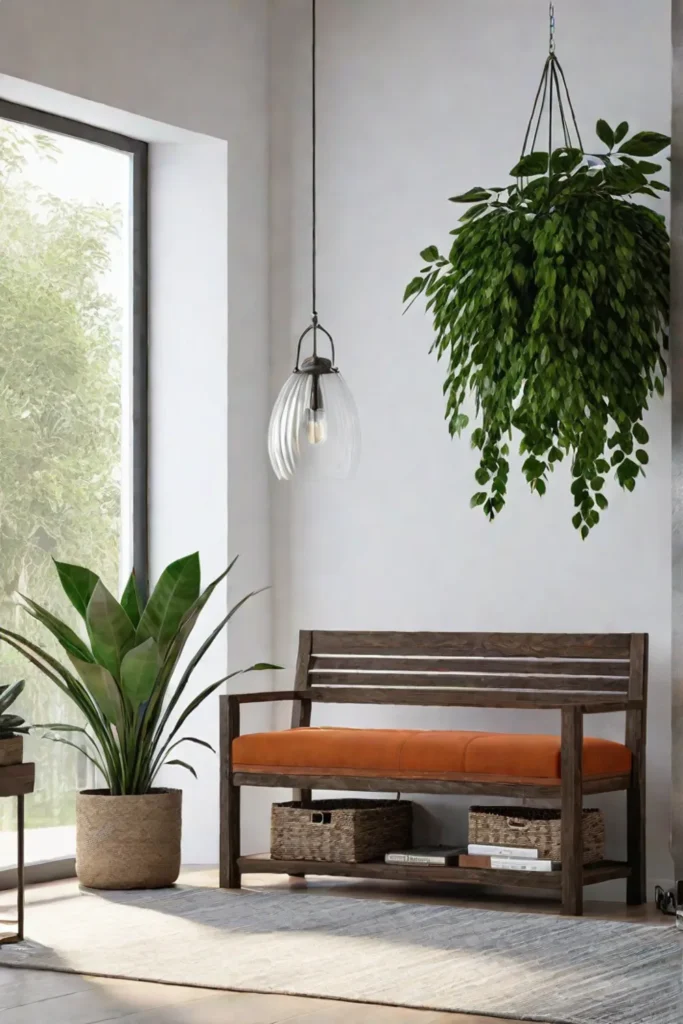
Consider investing in smart lighting systems or decorative solar-powered outdoor fixtures for an extra eco-friendly touch. These innovative solutions allow you to control your lights remotely and harness the power of the sun, reducing energy waste.
And remember to maximize natural light! Strategically placing your windows and using sheer curtains can help you minimize your reliance on artificial lighting throughout the day.
Eco-Friendly Paints
Another crucial element of an eco-friendly living room is the paint you choose. Conventional paints often contain high levels of volatile organic compounds (VOCs), which can negatively impact indoor air quality and the environment.
Fortunately, plenty of eco-friendly paint options deliver excellent coverage and durability without harmful chemicals. Brands like Benjamin Moore, Sherwin Williams, and Behr offer low-VOC and zero-VOC paint lines in various colors and finishes.
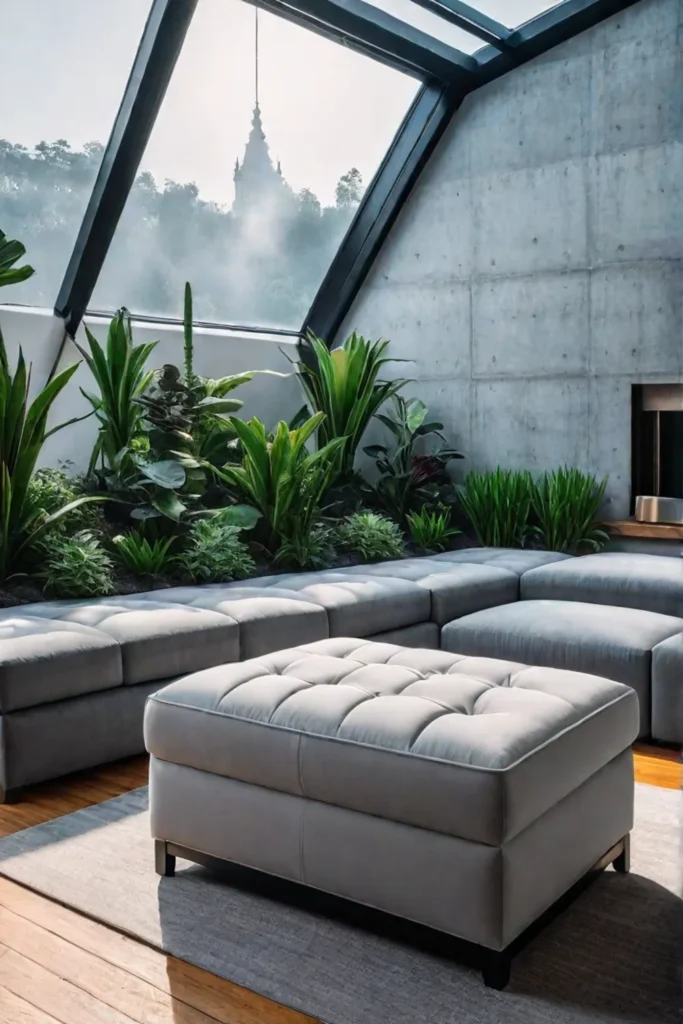
These paints reduce your exposure to toxic substances and contribute to a healthier living space. And the best part? They come in a variety of soothing pastels, bold jewel tones, and earthy hues that can perfectly complement your living room decor.
Second-Hand and Vintage Finds
One of my favorite ways to create an eco-friendly living room is by incorporating second-hand and vintage items. Not only does this approach reduce waste, but it also adds unique character and charm to your space.
The environmental benefits of buying second-hand are twofold: it reduces the demand for new products (and the resources required to make them) while keeping perfectly good items out of landfills. Plus, vintage pieces often have a lower carbon footprint since they’ve already been produced and shipped.
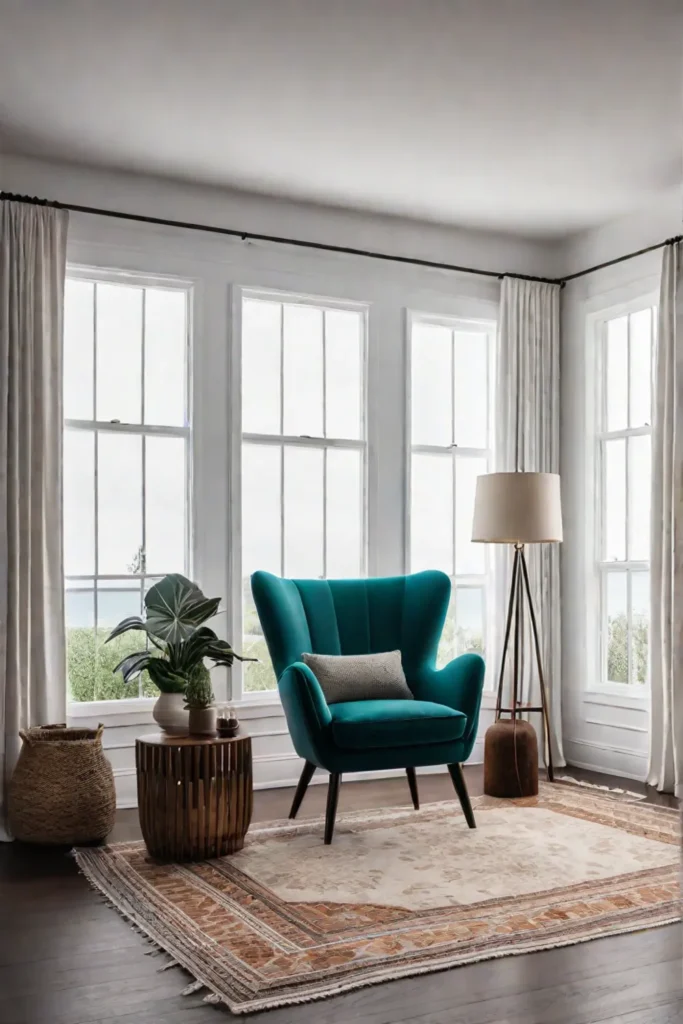
When sourcing quality second-hand and vintage items, look at thrift stores, flea markets, antique shops, and online marketplaces. With a little patience and creativity, you can find one-of-a-kind treasures that seamlessly blend with your modern living room furnishings.
Plant Life
Plants are visually stunning and play a crucial role in purifying the air and promoting a healthier indoor environment. Some of the best air-purifying plants for your living room include peace lilies, snakes, spiders, and golden pothos.
If you’re not the most green-thumbed individual, don’t worry – plenty of low-maintenance, eco-friendly plants can thrive in your living space. Succulents, ferns, and orchids are all great options that require minimal care and attention.
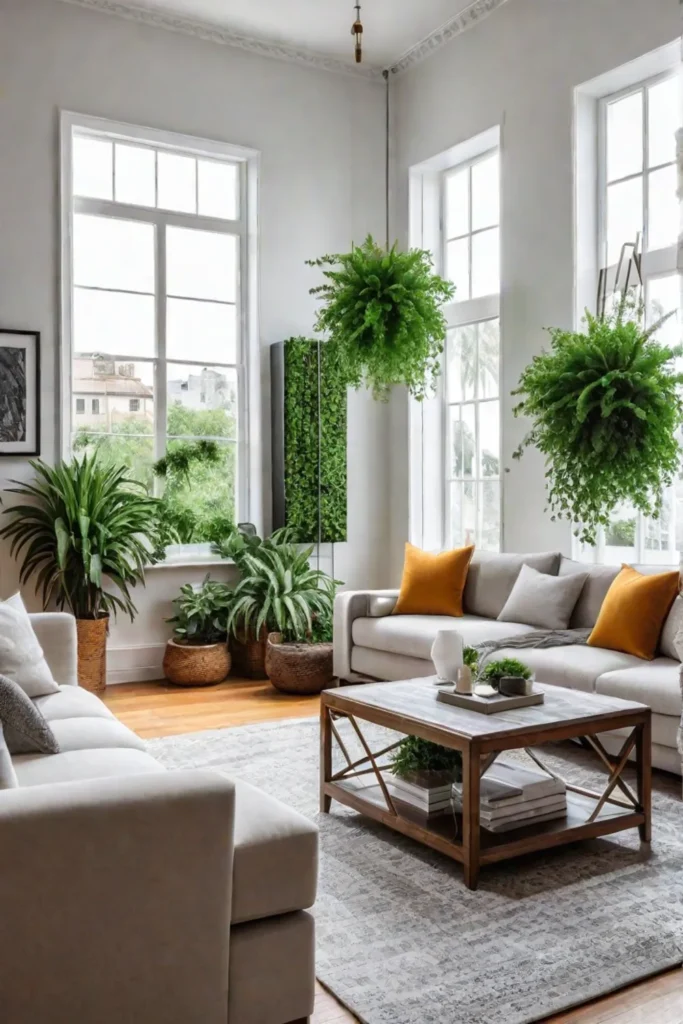
Get creative with how you display your plants, too. Vertical gardens, plant stands, and terrariums are all stylish ways to incorporate greenery into your living room without wasting valuable floor space.
Multi-Functional Furniture
Multi-functional furniture is a game-changer when it comes to creating an eco-friendly living room. These versatile pieces save space and reduce the overall need for new furniture, contributing to a more sustainable lifestyle.
Think convertible chairs that double as beds, sofa beds, foldable ottomans with hidden storage, and extending tables that provide extra surface area when needed. Repurposed items like recycled barrel furniture and mirror storage units can also serve multiple purposes while adding character to your living room.
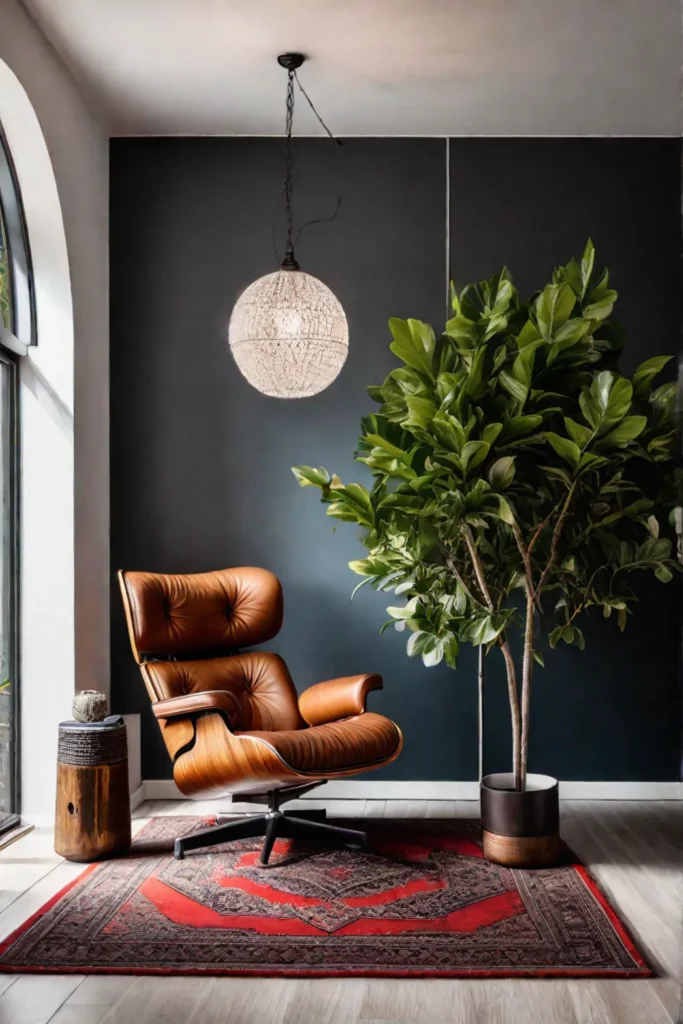
Multi-functional furniture is especially crucial in small spaces for maximizing efficiency and minimizing clutter. But even in larger living rooms, these pieces can help you define different zones and create a more organized, streamlined environment.
DIY Decor
If you’re crafty, DIY decor projects are a fantastic way to incorporate eco-friendly elements into your living room. You can create unique, personalized pieces that reflect your style and values by repurposing or upcycling household items.
Some inspiring DIY ideas include transforming wine bottles into vases, building a coffee table from reclaimed wooden pallets, and weaving colorful plastic bags into a one-of-a-kind rug. The possibilities are endless for giving new life to old, discarded materials.
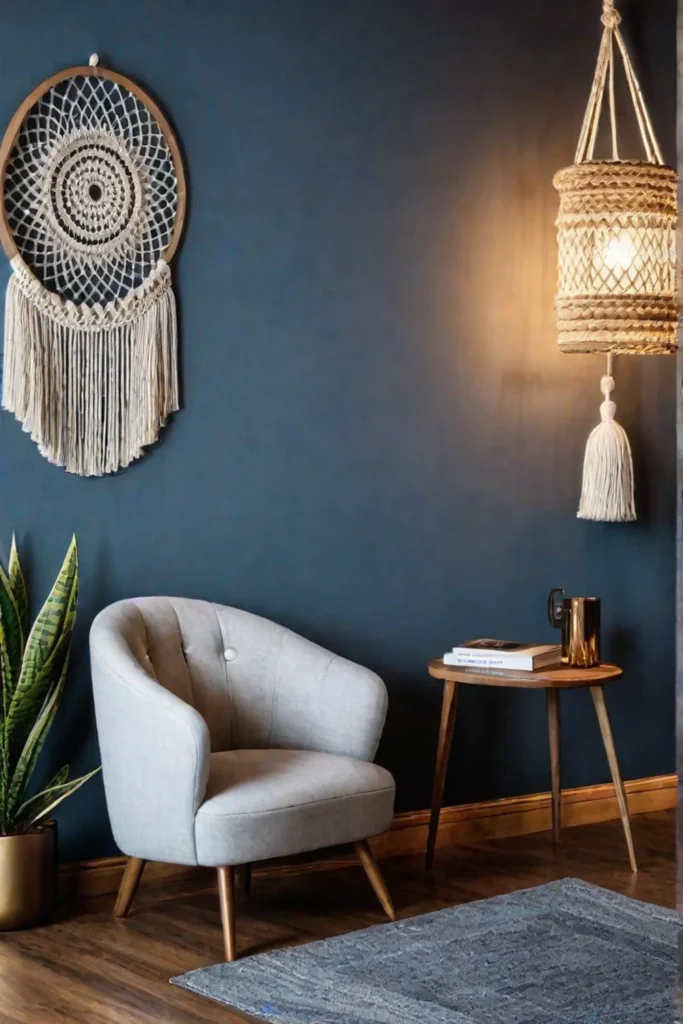
Beyond the environmental benefits, DIY decor allows for greater customization and cost savings. With plenty of tutorials and resources available online, even beginner crafters can tackle sustainable home projects.
Smart Home Technology
Smart home technology can be a powerful ally in creating an eco-friendly living room. Integrating devices that optimize energy usage can reduce your carbon footprint and enjoy long-term cost savings.
Look for smart thermostats that learn your temperature preferences and adjust accordingly, LED dimmers that conserve electricity, and automated blinds that regulate natural light and heat. Smart plugs and switches can also help you cut power to unused devices, minimizing energy waste.
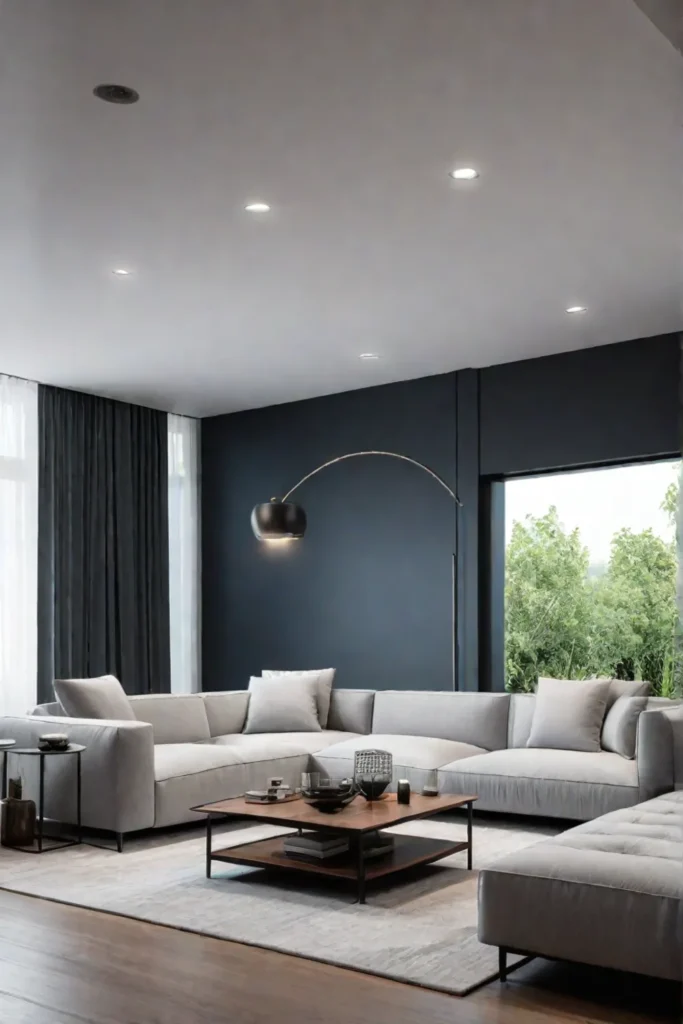
When selecting smart home tech, prioritize energy efficiency and look for certifications like ENERGY STAR. This will ensure your devices are eco-friendly and contribute to a greener, more sustainable living space.
Natural Fibers for Textiles
Choosing natural fibers for your living room textiles is another way to reduce environmental impact. Materials like organic cotton, wool, hemp, and linen are biodegradable, renewable, and healthier for indoor air quality.
Natural fibers generally release fewer volatile organic compounds (VOCs) than synthetic fabrics and contribute less to pollution. They’re also often more durable, meaning your living room furnishings and decor will last longer.
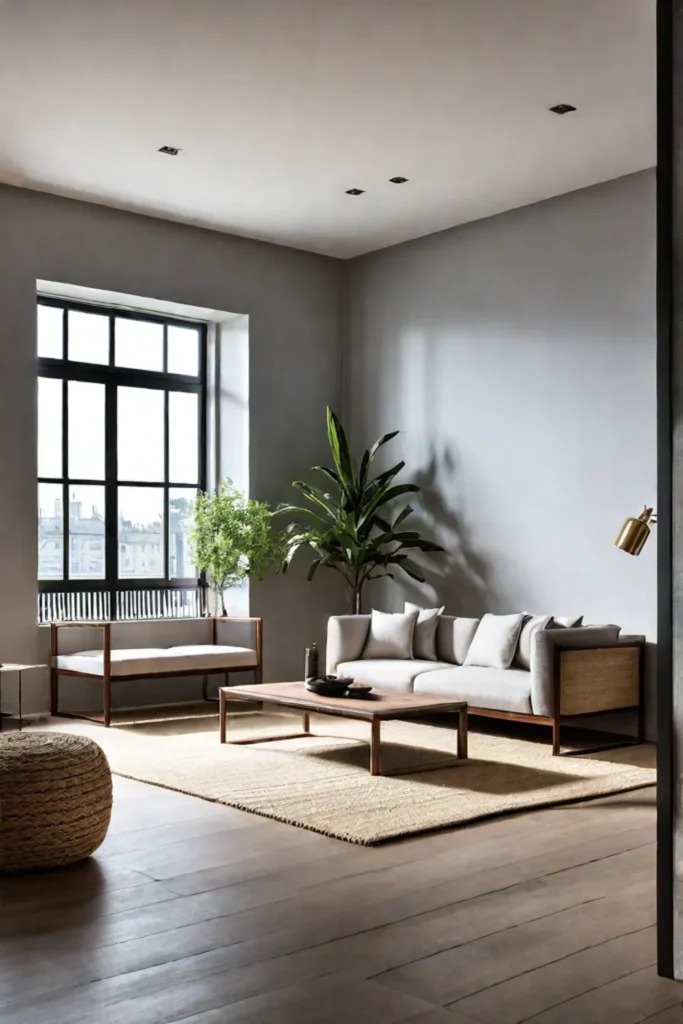
Incorporate natural textiles into your living room, such as fabric sofas, rugs, cushion covers, and window treatments. These materials’ earthy tones and inviting textures can lend a warm, cozy feel to your space.
Eco-Friendly Flooring Options
Last but not least, the flooring in your living room can significantly impact your home’s sustainability. Luckily, there are several eco-friendly options, each with unique benefits.
Cork flooring is a durable, renewable, low-maintenance choice lasting up to 20 years. Bamboo is another fantastic option, as it grows rapidly and can withstand heavy foot traffic for up to 25 years. For a timeless look, consider reclaimed wood flooring, which saves trees and adds character and history to your living space.

Compared to traditional vinyl or carpet, these sustainable flooring materials require fewer production resources and generate less waste over time. They also contribute to a healthier indoor environment by avoiding releasing harmful chemicals.
Conclusion
By implementing these ten eco-friendly living room ideas, you can create a space that’s visually stunning and good for the planet and your wallet. From sustainable materials and energy-efficient lighting to smart home tech and natural textiles, each strategy offers a simple yet impactful way to reduce your carbon footprint.
The best part? You don’t have to overhaul your entire living room all at once. Start by incorporating one or two of these ideas, and watch your space transform into a cozy, sustainable oasis. Your wallet and the environment will thank you!
So, what are you waiting for? It’s time to get started on your eco-friendly living room makeover. Who knows – you might inspire your friends and neighbors to follow suit, creating a ripple effect of sustainability in your community. Together, we can make a difference, one living room at a time.
